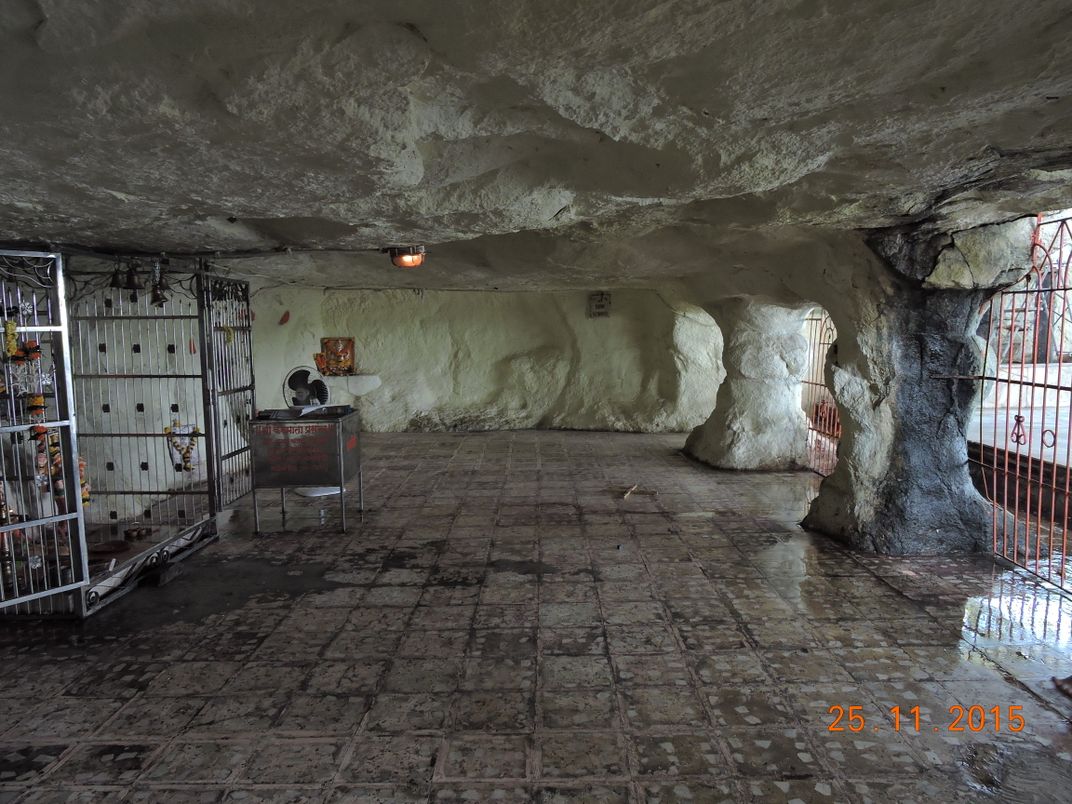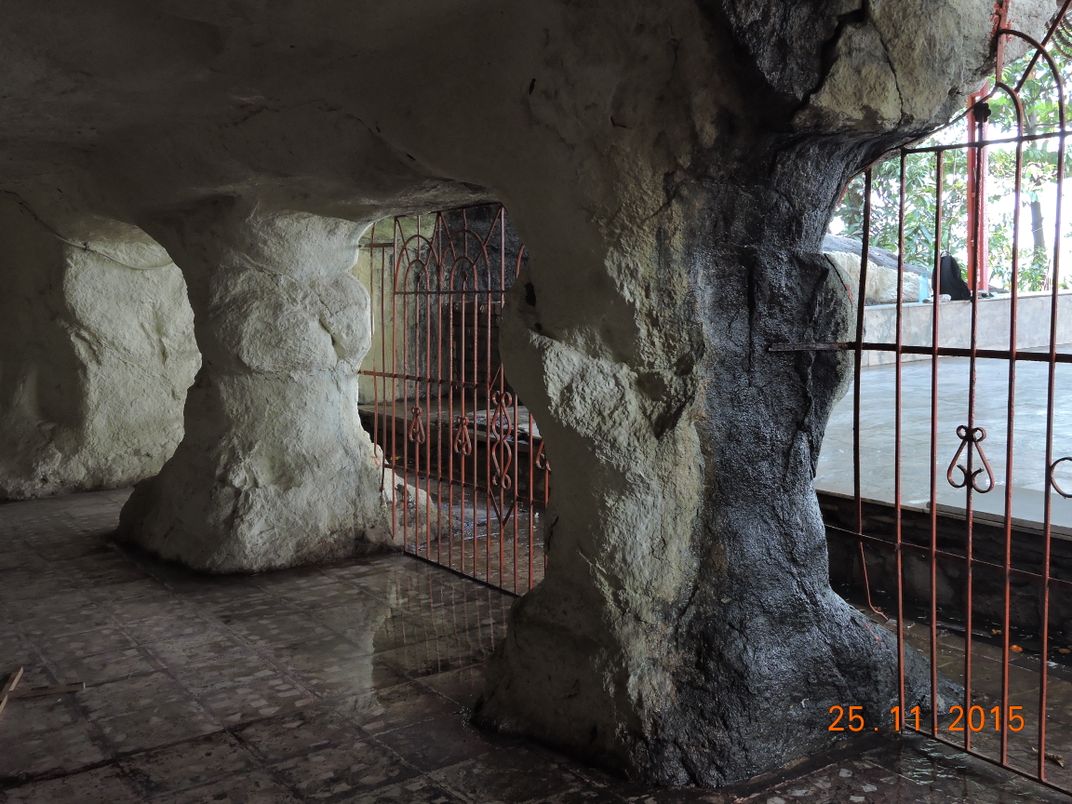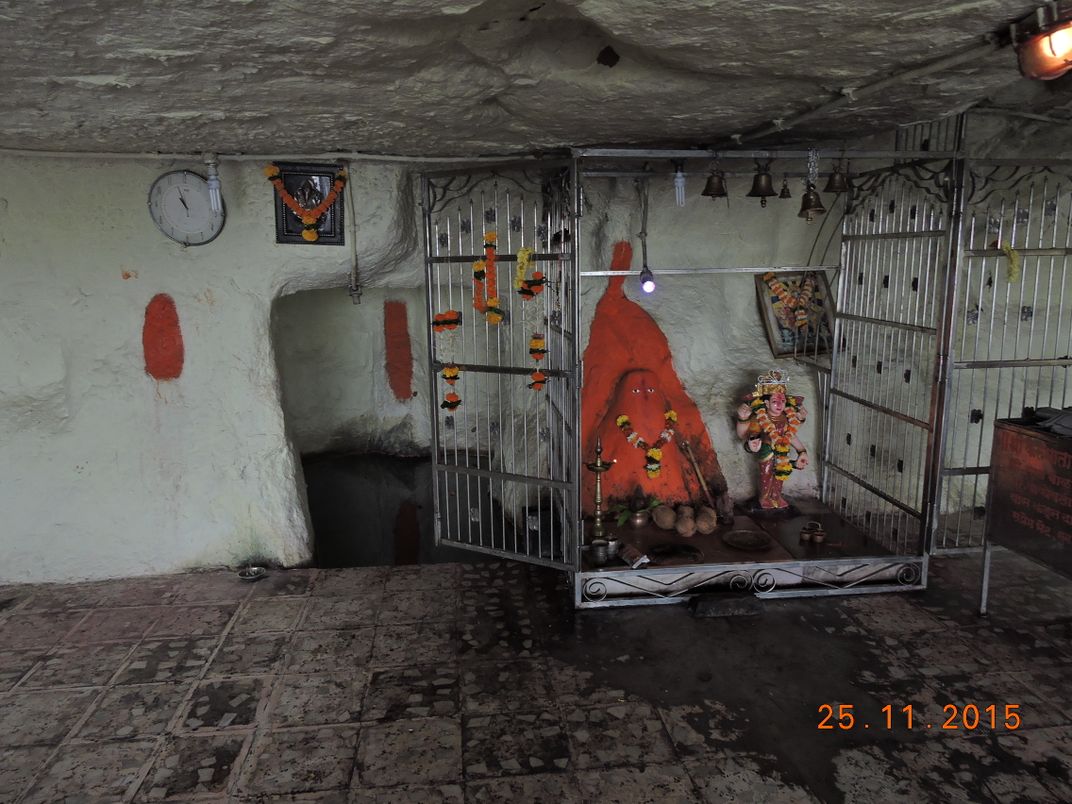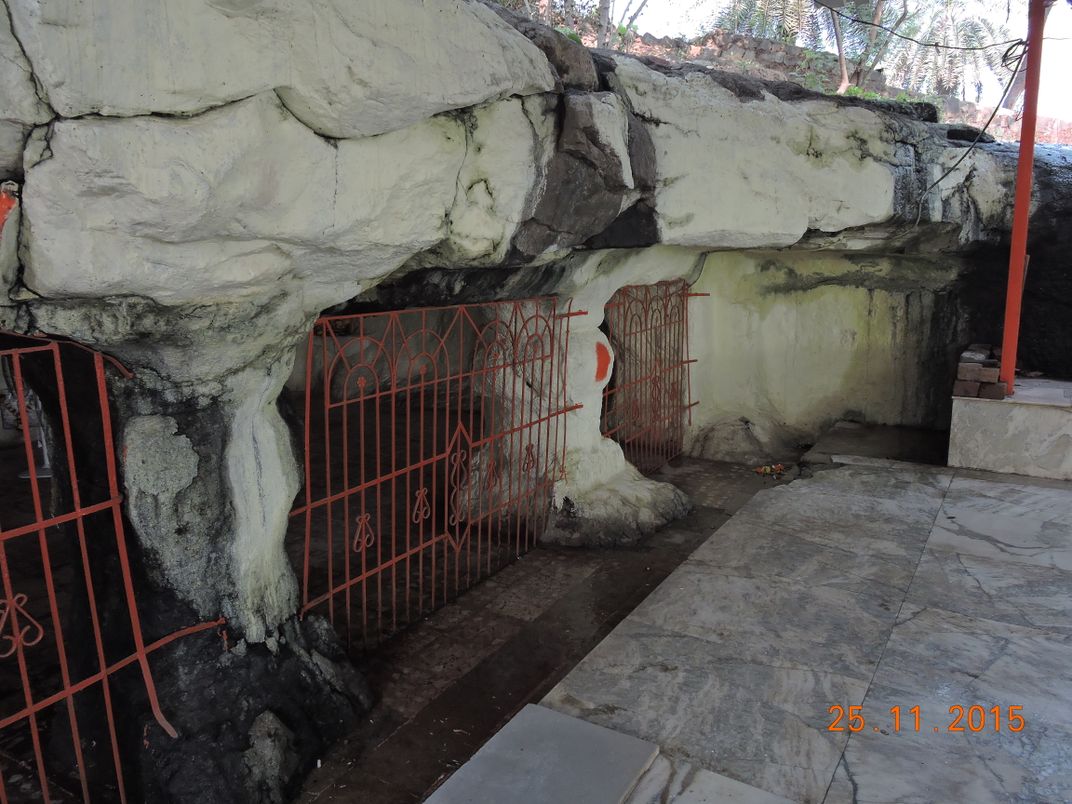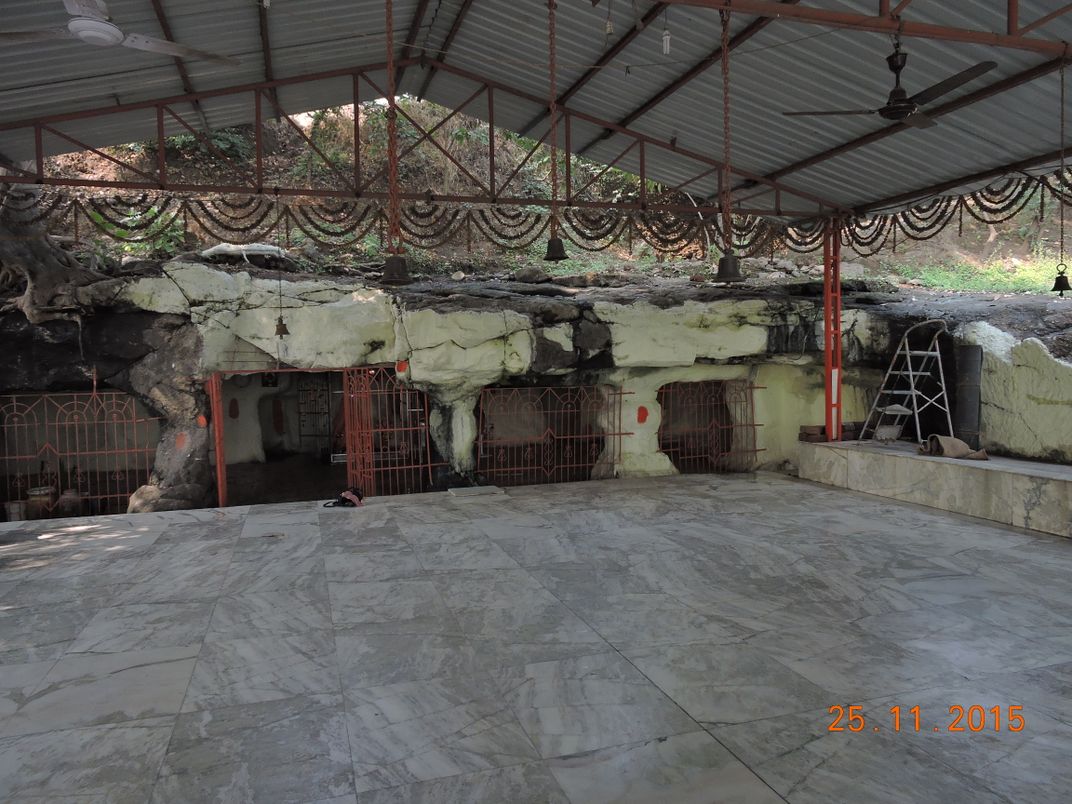Archaeologists Are Trying to Digitally Preserve an Ancient Cave Before It’s Demolished
The 5th-century cave is in the way of an airport expansion
For years, people traveling to and from Mumbai’s Navi International Airport have had to deal with the crowding and congestion that comes with India’s most populous city. Officials have looked for new ways to expand and modernize the airport, but have butted heads with local villages hoping to preserve their history. Now, a group of archaeologists are racing to digitally preserve an ancient cave before it is excavated and flattened to make way for a new runway.
The cave is located near a pair of villages on the outskirts of Mumbai, but smack in the middle of plans for the expanded airport. Carved out of a single, enormous piece of rock sometime during the Fifth Century, locals have used the site as a temple to a local goddess named “Kerumata” for nearly 70 years, Eric Grundhauser reports for Atlas Obscura.
"The cave had a lot of stagnated water and the floor was covered with knee-deep mud,” Damodar Ganpat M, a local villager who converted the cave into a temple tells Anvi Mehta for DNA India. “Initially, I cleaned all of it myself. Later, with the help of donations, added the floors and got the walls painted. Three chambers of the cave are still full of water, which is clear and fit to drink."
However, archaeologists studying the cave have found no evidence that it was originally built as a holy site. While it’s unclear what it was used for, researchers surveying speculate that the site, which is located near a large river, might have originally been used by traveling merchants to store their goods or take a pit stop before continuing on with their wares, Mehta reports. Salil Sayed, a researcher at Aalto University studying the cave, suggests that it could theoretically be related to an ancient port referred to as “Dounga” in Ptolemy's Geographia, a text that described many of ancient India’s ports.
“While most of the ports in that list are identified with reasonable certainty, Dounga has remained unidentified,” Sayed wrote in an email to Smithsonian.com. “The cave is situated right next to a village named Dungi.”
Unfortunately for the researchers, a study by the Archaeological Survey of India found no historical significance to the cave. Despite protests from the local villagers, officials have decided to go ahead with the project and will level the cave to make way for a runway, Chittaranjan Tembhekar reports for the Times of India.
In the meantime Sayed and his colleague, Anjay Dhanawade, are using a technique called photogrammetry to digitally document the cave in hopes that scientists will be able to continue to study it even after the cave is flattened. This technique, which has been used by archaeologists to digitally preserve other endangered artifacts and heritage sites, uses extensive photographs to recreate an object or site in digital space. Though the cave itself may be demolished, it’s possible that researchers could learn more from its digital remains.
